The untold story of Where is My Train's 100M users
How a small team built Google's first Indian consumer acquisition?
There's a peculiar thing about truly great products: they disappear into the fabric of daily life so completely that we forget they're even products at all. Most entrepreneurs chase the spotlight. They want their names on magazine covers, their faces on conference stages, their companies trending on Twitter.
But what if I told you about a founder who built something completely different? A product so essential that a hundred million monthly active users - a hundred million - have downloaded it, yet you've probably never heard of the person who created it. No TechCrunch headlines. No unicorn valuations. No founder Twitter celebrity.
This is the story of Nizam and "Where is My Train" (WIMT) - Google's first consumer product acquisition in India. ‘Where is my Train’ solved one simple problem - ‘How can I track train status every minute without internet or GPS?’.
Years after stepping away from active involvement Nizam and WIMT still organically get praise on Reddit and Twitter. The product speaks louder than its creator ever did.
This article is an edited version of a podcast-style video I recorded with him almost a year ago If you're building for India or interested in Indian digital products, you'll find this content extremely valuable. Consider taking notes as there's much to learn.
What does WIMT do?
For starters, "Where is my train" is an app that tracks trains without internet, using cell towers during journeys. It includes:
Station-based wake-up alarm
Offline access to train schedules and fares
Coach and seat arrangements
Live platform arrival and delay updates
The app works offline during your journey, requiring internet only when you're not on the train.
Intro
Where is my Train? This app, launched in 2015, was acquired by Google in 2018, becoming Google's first product acquisition in India. Nizam, a first-time entrepreneur, settled on building Where is my Train after exploring about 20 different concepts. This article will focus on how they discovered this idea and their reasoning behind it.
Why trains?
How did you land onto building Where is my train?
I always wanted to do something on my own. I dabbled with at least 20 ideas before "Where Is My Train." (WIMT) Whenever I shared the statement, "What if you could track a train without internet or GPS," people immediately asked, "How will you do that?" That's where I saw potential. Their curiosity made me choose this idea. Another thing that attracted me to "Where Is My Train" was the sheer number of people who use trains. There are 25 million people traveling daily whose needs are not satisfied.
In 2015, only few digital products could greatly elevate user experience and Uber's live cab tracking was one of them. Once I was going to pick up somebody from the railway station and faced a 30-minute delay in the train arrival. That sparked a thought: I came in an Uber and it was great to track - why not have the same for trains with thousands of people? My decision to work on WIMT was a mix of these thoughts.
There were multiple train tracking apps before WIMT, why did you have to build another one?
Everyone was subpar, actually. They were scraping NTES (National Train Enquiry System) data, scraping data from Indian Railways. They were just a shell holder of that same data. But at the end of the day, the problem is we need second-by-second updates of these trains, just like Uber. And that was not there with any of these apps.
The NTES is an official service provided by Indian Railways that offers real-time running information for trains across India. This includes updates on train schedules, live train status, estimated arrivals and departures at stations, delays, and train movements.
When you look at this public transport market itself, it looked like there was a lot of fragmentation and nobody was doing a great job at it. In India itself, there were 50-plus apps that show some demand in the market, but there is not a good app in that space. I have this philosophy: if an app in a category doesn't have a 4.6 or 4.7 rating with a huge number of downloads, that category is still not solved. You can go after it.
The Offline-First Philosophy: Building for Pre-Jio India
How did you strive to be different?
Earlier Nokia feature phones would display the tower location information along with signal strength. The cell info option was incredibly practical. Whenever you traveled on a bus or train, you could determine roughly where you were. The cell tower location data wasn't visible in Android.
I decided to track train location primarily using cell towers because high-quality GPS navigation is only necessary for turn-by-turn directions. For trains, which are about half a kilometer long, an accuracy of a few kilometers is sufficient.
In 2015, people turned off battery-draining features like internet to conserve power. Hence, I needed to build a completely offline solution for users in the pre-Jio era. That's the origin of building a train tracking solution that doesn't require internet or GPS. It seemed like magic to me, and I was eager to implement it.
From day one, the goal was to gather enough users utilizing the app inside trains so we could crowdsource data and create a Google Traffic equivalent for trains that everyone could access. While this was the initial concept, it took two years to reach the crowdsourcing phase. To build momentum and attract sufficient users on each train, I needed to take that offline approach.
How did you crowdsource cell tower data initially?
Without knowing cell tower distribution, how can you track trains using them? To address this, I created an APK that logs both GPS location and cell tower data in the background. I installed this app on my phone during a Wayanad (Kerala) trip with friends. I also distributed it to several friends who regularly travel to Chennai by train. The APK generated log files which they shared with me via email. I plotted these logs using Google Maps API and observed an interesting pattern.
When examining the cell tower distributions against GPS coordinates, a clear pattern emerged. Around railway stations, there was extremely high accuracy of cell tower coverage. Between stations, at least 2G towers existed, though the coverage was sparser. This makes sense because users primarily care about knowing when they've arrived at a station. The accuracy at stations was comparable to GPS, within a few meters. This density occurs because stations have many people making calls and using data, naturally requiring more towers, while remote areas have fewer. When plotted, I could literally see the railway tracks outlined by the tower coverage.
Another question was whether these cell tower IDs were static or changed daily. Without official data on tower locations, we needed to determine this ourselves. Through observation with the same APK, we discovered that the IDs were indeed static and could be utilized effectively. We ultimately compressed all of India's cell tower data along train routes into just 7-8 MB.
How did you manage to get the data of the cell phone towers of across the country?
So the initial cell tower data was purely collected by giving the app to friends, all the friends I know. I sent them the basic app, which also logs GPS and other information. Even before launching, I used to give that data logging app to many of my friends. If I found somebody going to Delhi or Kolkata, I would give it to them, and they would cover that trip. And if you cover a lot of main stretches, that's good enough.
Later, to gather more cell tower data, we innovated. There is curiosity among people to check the speed of the train. So we had a speedometer feature when we launched the app. When they used the speedometer feature, we would also get the GPS location and the cell tower location. And then we used that data for the cell tower mode.
And as more and more people used the app, it improved. So on day one, it was not that great, but it worked very well for a few routes, and it was also dependent on the cell tower operators.
The Anti-Marketing Growth Strategy
How did you get your first 1000 users?
We wanted to share our app with everyone who might use trains. About 80% of my friends were train users, some traveling weekly to Chennai. We shared the app with all of them, and our closest friends became regular testers, reporting bugs that helped us continuously improve the app.
When we first launched the app, searching "Where is my train" ranked us around 400th since these were all common words. Despite current complaints about the Play Store's fees, I must acknowledge that Google's Play Store algorithm is extremely efficient, and both Android and the Play Store were instrumental in helping address our visibility issue without any paid promotions.
Google's policies may not be ideal now, but they made browsers faster through WebKit investment. Google excels at distribution through the Play Store. We focused solely on reviews and ratings, which improved our app's visibility through the Play Store's algorithm. I never spent money on ads for WIMT - partly due to budget constraints, but mainly because we're always seeking to improve.
We focus solely on retention: are users loving our product? Initially, we only cared about avoiding one-star reviews. Though we never achieved a day with zero negative reviews, this obsession drove us toward quality. That's why we never expanded features but instead kept focusing on the same problem: quality.
What was the inflection point of hockey stick growth?
I tried talking to strangers at a railway station to get app installs. After 3 hours of humiliation, I only got about ten installs. I realized this wasn't an efficient use of my time—I could have spent that time coding instead. I concluded I should focus on improving the product rather than this approach to user acquisition.
We didn't focus much on distribution. We got about 40 downloads daily and were content with that. We integrated feedback throughout the app, collected user input, and solved problems to make the product useful. My main goal for this side project was generating enough ad revenue - about 20 lakhs- to match my previous salary so I could quit and work for myself full-time. With that modest target, I wasn't aiming for $100,000, as I wasn't sure that was even achievable.
Sharing app via bluetooth
Did you see usage patterns higher from certain states over other states?
We saw installs from all over India even at the initial stages. Since my friends were only from Tamil Nadu and likely weren't traveling regularly, I believe our customers found us primarily through search engines, with some word-of-mouth referrals.
We noticed many reviews mention "TTE recommended it." This makes sense when comparing train and food delivery apps. With Swiggy, you only share when you're excited about good food. But train travel is different. If you're wondering where your stop is, you'll ask another passenger. When they open Where Is My Train to answer you, you naturally ask about the app. People are idle on trains and check their location frequently. That's why we kept the distinctive blue color - when you see others using it, you build trust in the app.
With the train, the solution was the person beside you. After adding Bluetooth sharing, 50% of our installs came through it. Many weren't aware of their Google accounts - they just used Xender for transferring apps, similar to old MP3 transfers. This was eye-opening. I discovered that apps like Shareit had 100+ million downloads serving this market.
I often arrive early at train stations to check our platform board information. People frequently ask me for help understanding the displays. In one interesting encounter I recommended "Where Is My Train" app to a passenger. He asked me to send the "software" to him, then said "Xender it" - referring to Xender. When I tried to help him download it from Play Store, I discovered he didn't even have a Google account. It's extremely difficult to build good products without understanding your users.
Xender was a popular mobile app used for sharing and transferring files between devices without using cables, the internet, or mobile data. It works over Wi-Fi and supports cross-platform transfers between Android, iOS, Windows, and Mac devices. Xender was banned in India in June 2020
The zero ad policy
You wanted to earn your salary back through ads but eventually WIMT had zero ads. How did you resist your urge to not put ads given you were bootstrapping.
Ad revenue was my last resort, not first choice. I always prepare for worst-case scenarios, and ads could sustain our team if needed. We tried raising funds initially, meeting investors, but faced rejection. Our pitch focused too much on tech. One investor even suggested our product might be less relevant after Jio's launch.
We didn't activate monetization. My next step would be hiring more people. I recruited friends who were interested, with my co-founder Arun and I quitting first. After eight months, we brought on three others, offering good equity with a condition: no salary expectations for two years while we wouldn't monetize. This equity compensated for that risk. Within those two years, we expected to either be acquired, raise funding, or develop monetization - most likely raising funding. Unlike companies burning cash in "negative revenue," we were at "zero revenue" since our burn rate was minimal.
I identified two problems with ads. First, revenue numbers make people calculate company worth based solely on that. Second, I believed ads weren't the right monetization strategy for trains. I avoided ad revenue to focus on growth. People ask why not use ads to fund user acquisition, but users gained through ads have poor retention. Users appreciate WIMT for being ad-free, with many reviews highlighting this benefit. I was essentially trading potential revenue for growth, which aligns with my long-term vision.
The main goal of the company for the next two years was to grow the user base to 15-20 million with high user engagement and monthly active users. We had plans to introduce cab services or in-train entertainment options will only if they align with our primary objectives. I realised that with our current team, we won't have the bandwidth to focus on monetization avenues without affecting our growth.
When running a company, you get lots of advice - mostly bad ones. Friends pressured me to add ads, saying "One ad won't hurt the experience." But founders who actually run startups understood my vision. Binny (Bansal) once told me, "It's good. After reaching 100 million users, you can think about that. Focus on growth now and monetize later."
The Google Acquisition: When to Say Yes vs. Taking VC Money
How did the Google acquisition happen?
We reached a point where my team's savings were depleted and we needed to advance. Users wanted ticket booking in our app, but I told the team that with only five people, we shouldn't handle others' money. The main complaint about booking apps was refunds, and we'd need capital to handle those perfectly. This requires substantial funding to build proper customer support and infrastructure.
A VC firm from China contacted me on LinkedIn, saying they'd been searching for me. They were upset we hadn't done any press releases. When they visited, they barely looked at our pitch deck, compared us to WhatsApp's team - small team but good user base. They asked for our P&L, which I had no idea about and they wrote it on a tissue asking me to hand it over to our CA. Within two weeks, they gave us a term sheet.
After reviewing the term sheet, I discovered important clauses like liquidation preference. This means if someone invests $5 million and you sell for that amount, they get all $5 million first, leaving you nothing. Only after that does their ownership percentage matter. Regardless of valuation, investors only need to believe the company is worth their investment amount to be protected. With anti-dilution clauses and aggressive pro-rata rights, it seemed like a one-sided deal favoring investors. Based on my analysis, if we could exit at less than 3x what Google offered, taking Google's deal made more sense. For anything above 3x, taking this investment would be better.
I was in acquisition talks with several companies. I preferred Google because they were professional, appreciative, and never lowballed us, unlike some Indian companies that used fear tactics. Google's engineering culture resonated with us, and joining them was exciting for someone from my background. A Google exit would help my future startup ambitions. They focused on growing our product rather than immediate monetization like other companies. I also considered how joining Google would provide long-term career stability for my co-founders. The financial offer was good too. We were like five co-founders plus one junior engineer we had and one QA.
Second time founder
After WIMT how did you decide to build an app around distraction called Regain?
My strengths include running a lean team efficiently and managing B2C products - understanding customers, satisfying them, and handling launches. My main weaknesses are operation-sensitive businesses, which I've never worked with and seem stressful since things aren't fully under control. I'm also not a good salesperson; I've always feared or disliked selling, which is why I didn't explore other business problems initially. I can't enjoy talking to someone just to sell them something.
I needed a problem that's wide enough to gain users quickly. With WIMT, 80% of my friends used trains, making it a broad tech problem that was B2C and non-operational, aligning with my strengths.
Time is money. While spending money requires a PIN, making it controlled, anyone can take your time- tech companies, content creators, or random people sending messages. The biggest time-waster is watching Youtube Shorts and reels on mobile. We wanted to build the opposite force for these addictive platforms.
To address this we built Regain - a time blocker and productivity app. Regain targets professionals and students who value productivity, not those in service jobs using time for leisure. Even if Regain yields nothing after two years, exploring this psychological problem will be worthwhile.
You need to seek a moonshot opportunity. Only then should you raise funding, when you know something works exceptionally well. For example, with Regain, funding could help expand to smartphone addiction solutions for children or launching an addiction free phone. I don't like to seek investment till I am fairly confident that the growth is very good. In general, I'm cautious about borrowing money but willing to risk my own since I don't want to lose others' funds. When starting this company, I committed 10% of my portfolio to it and decided to use my own money initially. This calculated risk offers potentially significant rewards. Rather than relying solely on Nasdaq or index funds, I can invest in myself without financial strain. I simply consider it as having received 10% less from Google.
<Fin>
While this story focuses on Nizam's journey, "Where is My Train" was built by a remarkable team of co-founders - Arun, Sashi, Bala, and Sundaram - along with employees Kamakshi and Hepsy, all of whom believed in the vision enough to work without salary for two years. As Nizam puts it: "Without them this may not have been possible"



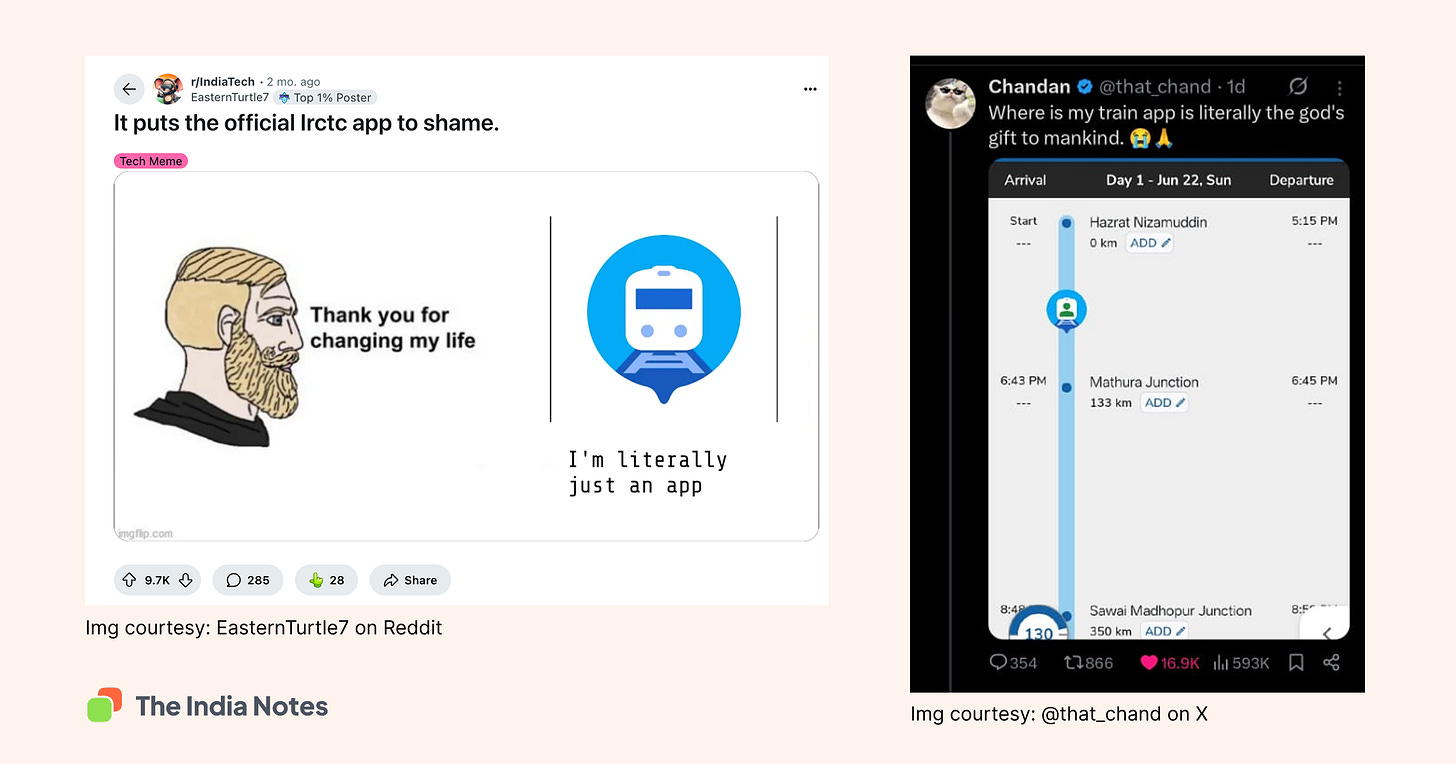
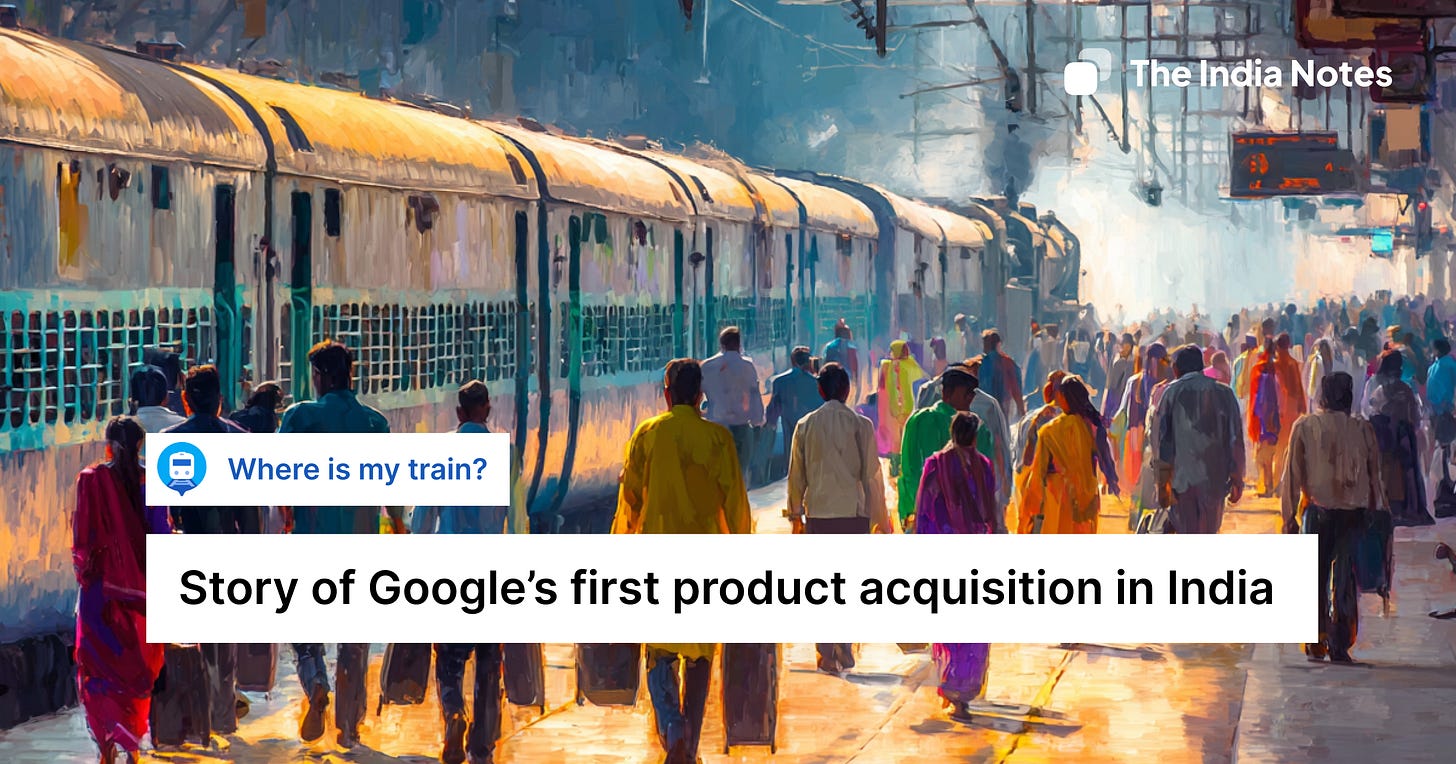
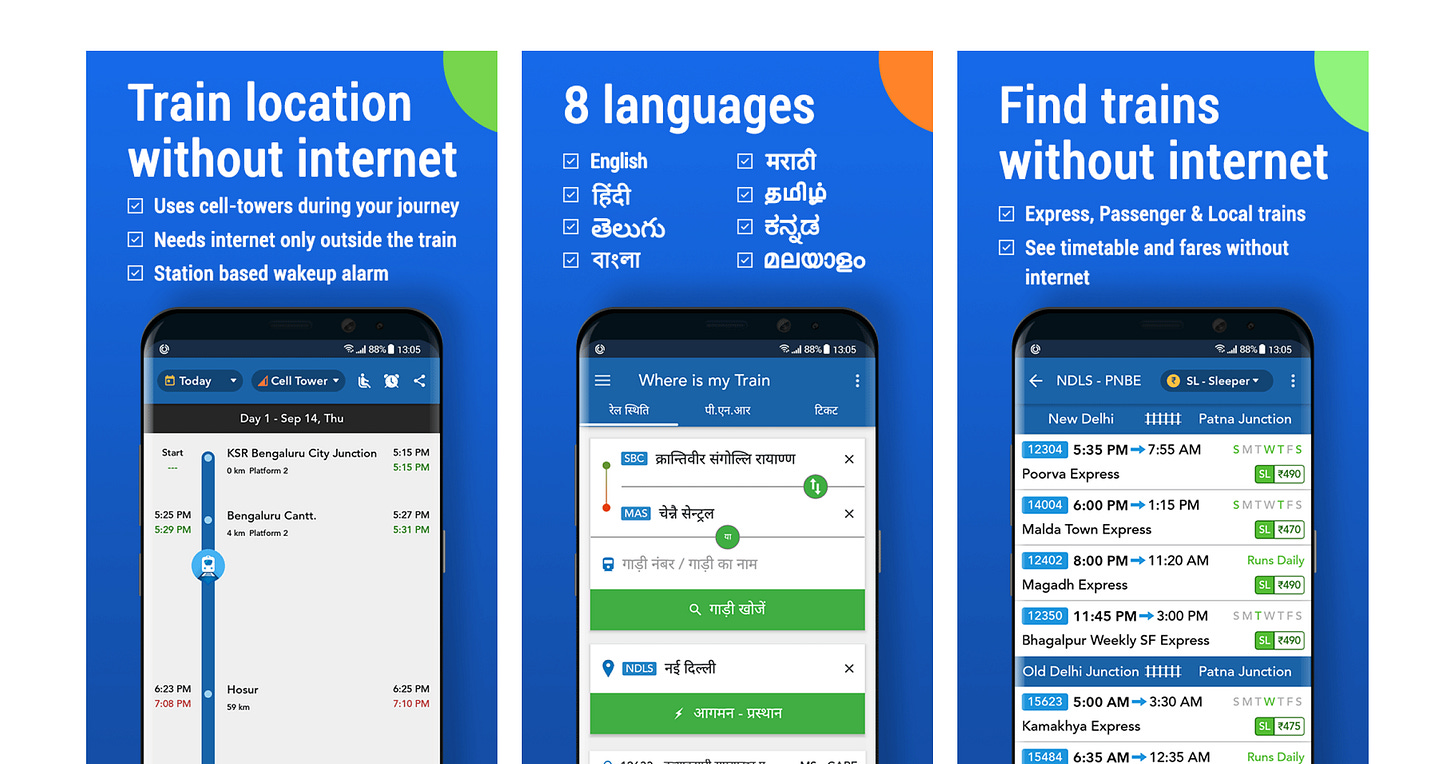
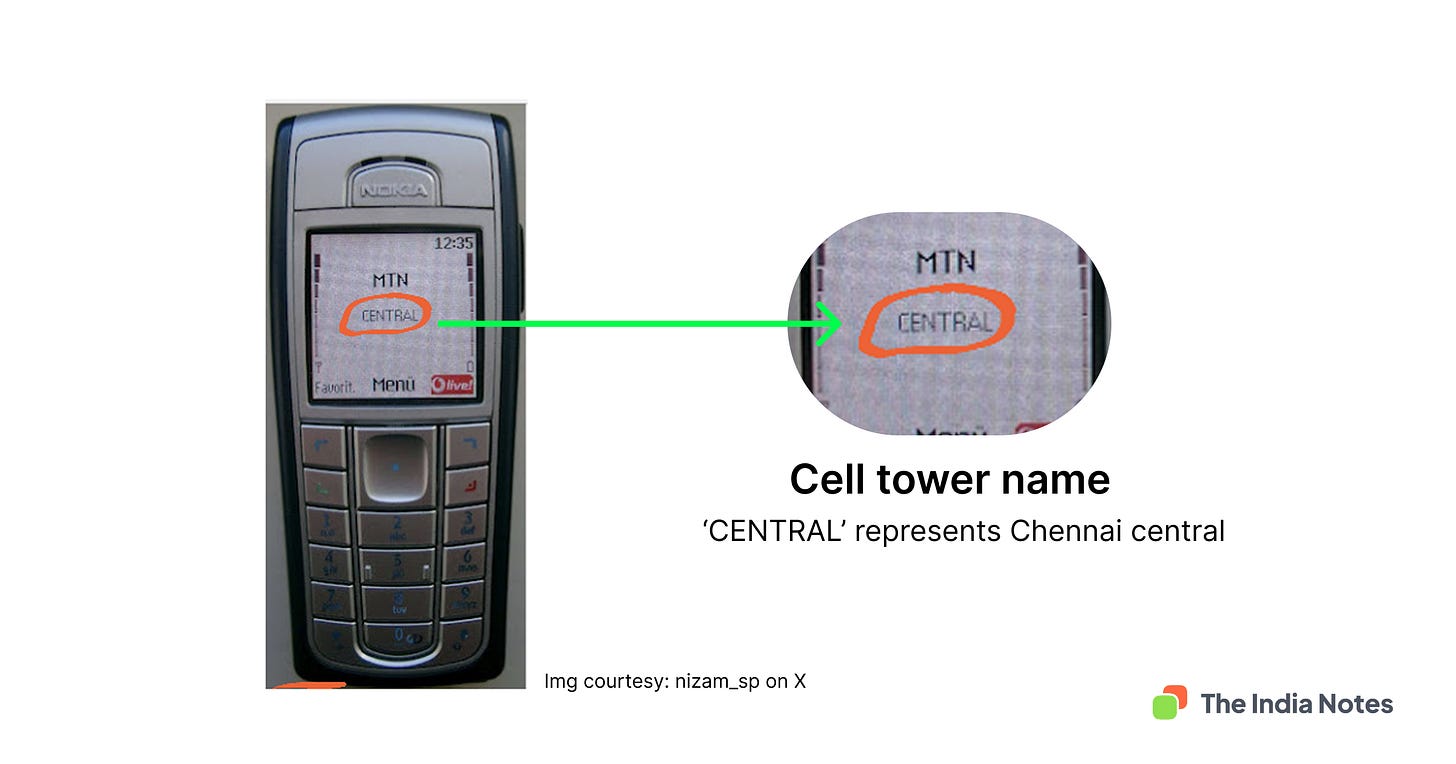
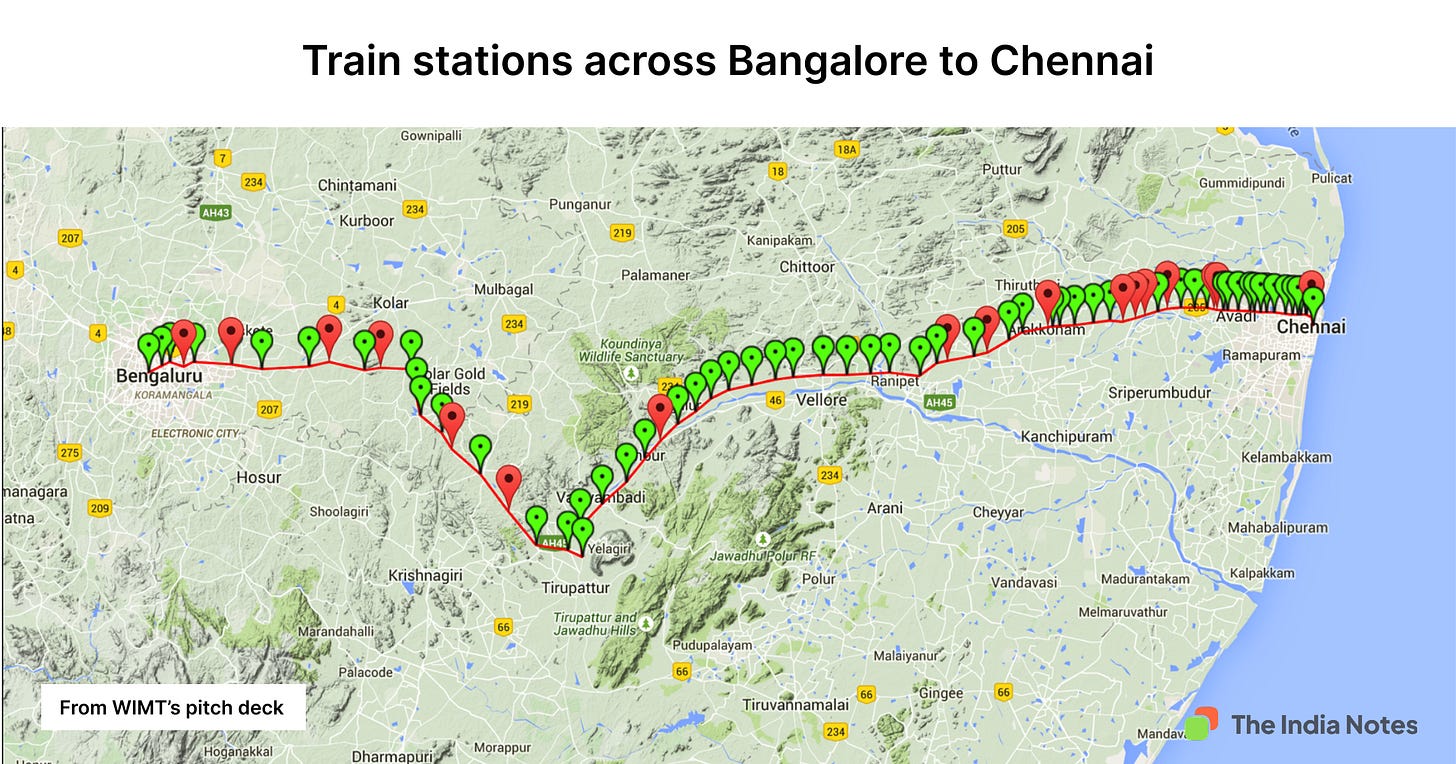
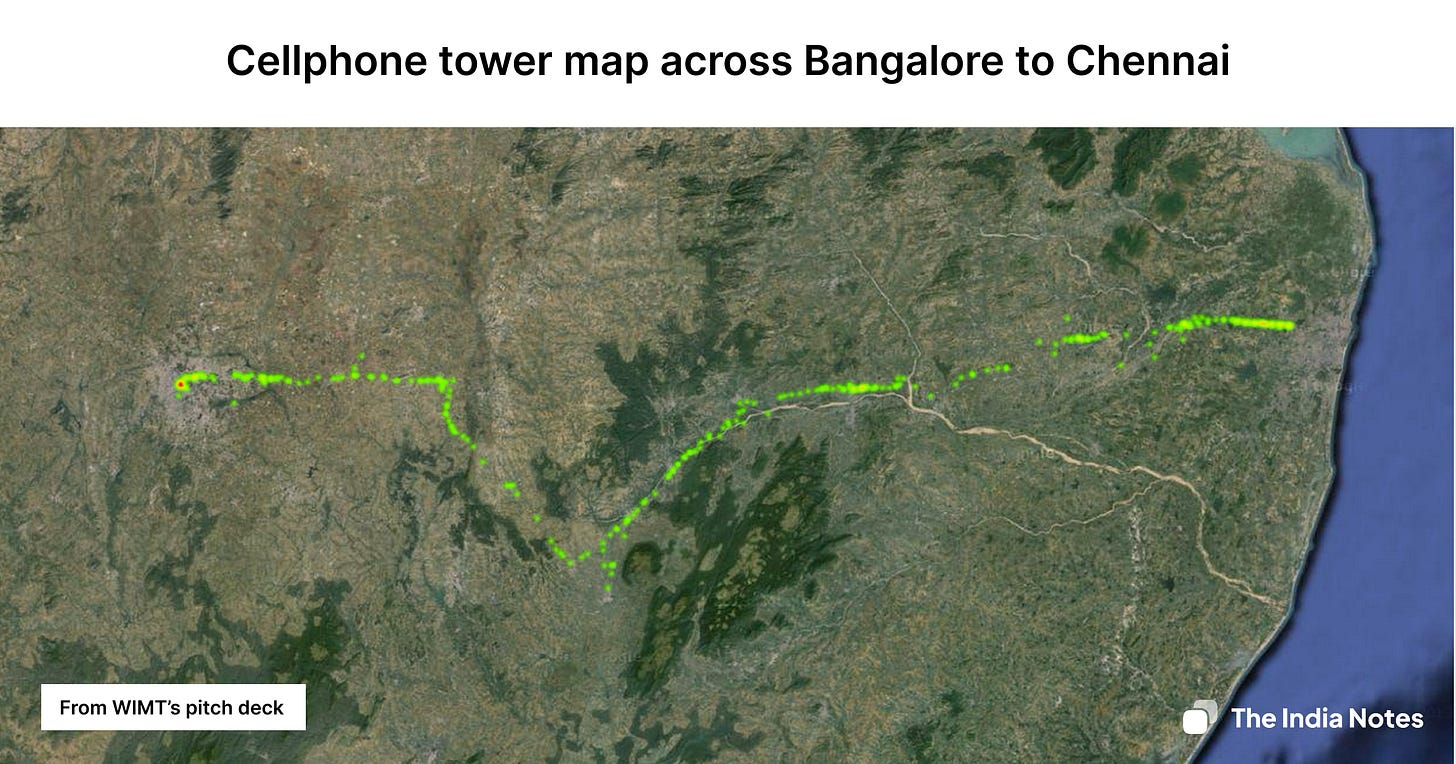
This is to toast for Nizam and the team!
WIMT has made my train travel a bliss for last 8 years and it makes almost 50% of total travel time annually.
Lovely read!